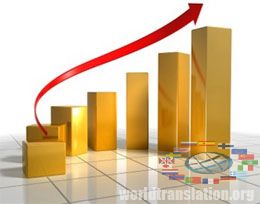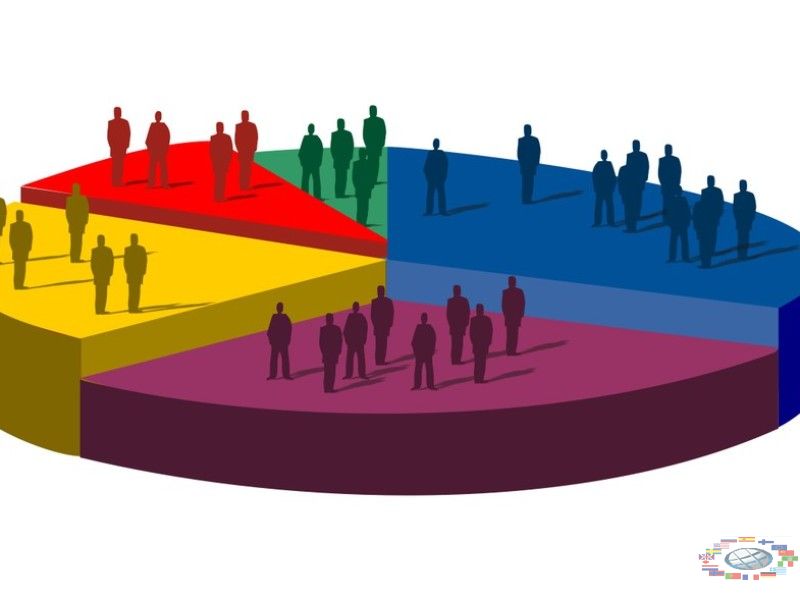Market capacity

Market capacity - its a possible (for a given price level) volume of products sales, the size of demand and the value of commodity supply. Distinguish: the capacity of the total market, the capacity of the industry market (commodity) and the capacity of the regional market. The capacity of each of these markets depends on the level of prices of goods, as well as the size of the proposal. and demand.
Distinguish: the capacity of the total market, the capacity of the industry market (commodity) and the capacity of the regional market. The capacity of each of these markets depends on the level of prices of goods, as well as the size of the proposal. and demand.
The volume and structure of production, the amount and structure of retail turnover are planning, taking into account the capacity of the market. Capacity of the socialist domestic market is constantly growing. The following main factors affect the capacity of the market: growth and further specialization of production; the development of transport connections, which contribute to greater goods movement and turnover between regions of the country; population growth and changing of its composition; high employment in the field of social production; the reduction of labor in the household; wage growth; an increase of the marketability of agricultural production and growth of farmers cash income; an increase of cash payments from public consumption funds; reduction of taxes; changes in retail prices.
The following main factors affect the capacity of the market: growth and further specialization of production; the development of transport connections, which contribute to greater goods movement and turnover between regions of the country; population growth and changing of its composition; high employment in the field of social production; the reduction of labor in the household; wage growth; an increase of the marketability of agricultural production and growth of farmers cash income; an increase of cash payments from public consumption funds; reduction of taxes; changes in retail prices.
Market capacity the country (region) is determined on the basis of data, characterizing the population purchasing funds, small wholesale turnover, and foreign regional demand and money migration.
Foreign regional demand - this is purchasing funds of newly arrived population, which are used to purchase goods in a given region. 
The task of forecasting market capacity is to identify potential sales volume of goods. Defining the capacity of the market of light industry products, take into account the possibility of multiple use of the products, the set of which is accumulated in the population.
Durable goods have a long term of wear, therefore the development of the market capacity of these products depends on the  level of provision of families with them in base period. Forecasts of market capacity, as well as forecasts of demand are divided into long term, medium term and short term. For their calculations are used the following methods: regulatory, economic and mathematical modeling, of expert estimates, extrapolation and the method of analogy. When choosing an appropriate method you should take into account peculiarities of the studied market.
level of provision of families with them in base period. Forecasts of market capacity, as well as forecasts of demand are divided into long term, medium term and short term. For their calculations are used the following methods: regulatory, economic and mathematical modeling, of expert estimates, extrapolation and the method of analogy. When choosing an appropriate method you should take into account peculiarities of the studied market.
Thus, the capacity of the market of food products is determined, as a whole, then are determined the capacity of the market of livestock products and plant growing. Each forecast is compiled by similar goods, such as fats market and then by certain commodity markets. When calculating the capacity of the market of food products with the use of mathematical economic models from the entire set of causal factors, the following is included into the model: purchase funds and population size, turnover of food products, the level of prices for all food products, the level of prices for specific products, organic revenues from personal subsidiary farms of the population, shopping on the farm market and in commission trade of consumer cooperation.
When calculating the capacity of the market of food products with the use of mathematical economic models from the entire set of causal factors, the following is included into the model: purchase funds and population size, turnover of food products, the level of prices for all food products, the level of prices for specific products, organic revenues from personal subsidiary farms of the population, shopping on the farm market and in commission trade of consumer cooperation. To determine the capacity of the market of light industry use the data of sample survey, taking into account the lifetime of a product, the availability of the wardrobe and the degree of satisfaction of demand. The service life of products is affected by factors of physical and mental deterioration. Physical deterioration occurs when a product can not be used for its intended purpose. Moral deterioration occurs when you change the technologies of production, fashion, human figures and other factors. Products of general family usage (bed linen and hygiene items) are taken into account in perspective consumption rates.
To determine the capacity of the market of light industry use the data of sample survey, taking into account the lifetime of a product, the availability of the wardrobe and the degree of satisfaction of demand. The service life of products is affected by factors of physical and mental deterioration. Physical deterioration occurs when a product can not be used for its intended purpose. Moral deterioration occurs when you change the technologies of production, fashion, human figures and other factors. Products of general family usage (bed linen and hygiene items) are taken into account in perspective consumption rates. Development of capacity of the market of durable goods depends on the level of their provision in the base year. The level of provision is defined as the ratio of finished park of products to the number of families or entire population. When determining the demand on durable goods it should be considered the initial demand and demand for replacement, due to physical or mental deterioration of the subject. The total value of demand on durable goods, equals the sum of the initial demand and demand for replacement.
Development of capacity of the market of durable goods depends on the level of their provision in the base year. The level of provision is defined as the ratio of finished park of products to the number of families or entire population. When determining the demand on durable goods it should be considered the initial demand and demand for replacement, due to physical or mental deterioration of the subject. The total value of demand on durable goods, equals the sum of the initial demand and demand for replacement.